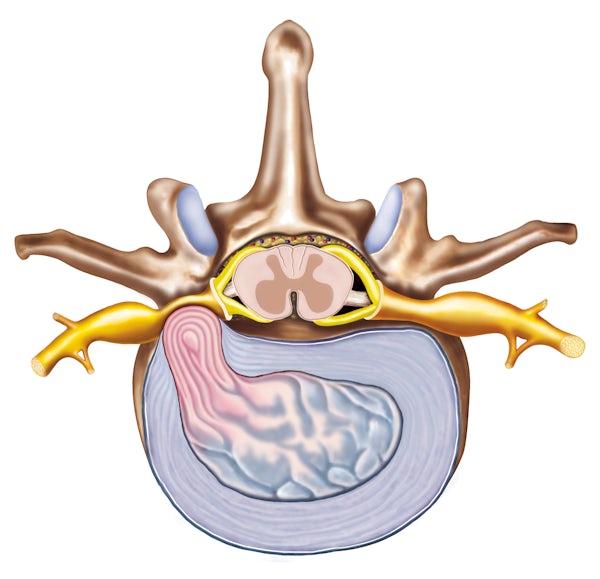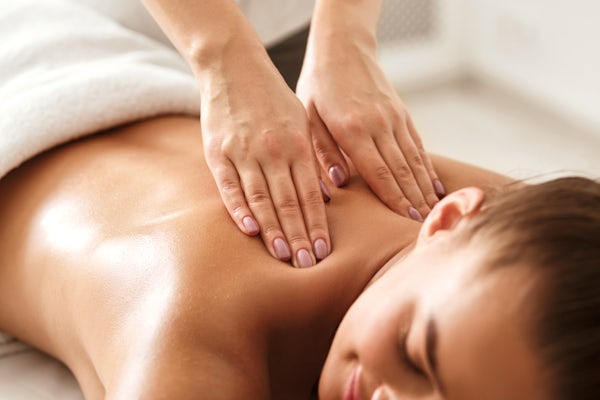
Lumbar disc herniation (LDH) can be a debilitating condition, causing pain and limiting mobility. The good news, however, is that a recent meta-analysis has revealed promising statistics about the body's ability to heal LDH naturally through conservative treatment methods. In this article, we will delve into these findings and explore how chiropractic care and remedial massage therapy can play crucial roles in this healing process.
Understanding Lumbar Disc Herniation and Natural Resorption
LDH occurs when the intervertebral discs in the lumbar spine (lower back) are damaged, leading to herniation, where the disc material presses against the spinal nerves.
This condition can cause significant pain, numbness, and weakness in the lower back and legs. Traditional treatments often involve surgery, but many patients seek non-invasive alternatives.
The recent meta-analysis analysed data from 31 studies involving 2,233 patients who received conservative treatments for LDH. The study found that the overall incidence of spontaneous disc resorption (natural healing) was an impressive 70.39%. Here are some specific findings:
- Disc sequestration: 87.77%
- Disc extrusion: 66.91%
- Disc protrusion: 37.53%
- Disc bulge: 13.33%
Interestingly, the resorption rates varied by country:
- Korea: 83.52%
- Turkey: 83.68%
- UK: 78.30%
- Japan: 66.98%
- USA: 61.66%
The resorption process primarily occurred within the first six months of conservative treatment. These findings highlight the significant potential for natural healing and underscore the importance of exploring non-surgical treatments.

The Role of Chiropractic Care
Chiropractic care focuses on diagnosing and treating musculoskeletal disorders, particularly those involving the spine. Chiropractors use hands-on spinal manipulation and other techniques to alleviate pain and improve function. For LDH, chiropractic care can be particularly beneficial in the following ways:
Spinal Adjustments: Chiropractors perform spinal adjustments to realign the spine, reducing pressure on the herniated disc and surrounding nerves. This can alleviate pain and promote natural healing.
Improved Mobility: Regular chiropractic adjustments can improve spinal mobility, making it easier for patients to engage in physical activities that support recovery.
Preventive Care: Chiropractic care emphasises overall spinal health and can help prevent future disc herniations through lifestyle advice and regular adjustments.
The Role of Remedial Massage Therapy
Remedial massage therapy involves the manipulation of soft tissues to relieve pain, reduce muscle tension, and promote healing. When integrated with chiropractic care, remedial massage therapy offers several benefits for patients with LDH:
Muscle Relaxation: Massage therapy helps relax tight muscles that may be contributing to the pain and discomfort associated with LDH.
Improved Circulation: Massage improves blood flow to the affected area, delivering essential nutrients and oxygen that support the healing process.
Reduced Inflammation: Massage can help reduce inflammation around the herniated disc, alleviating pain and promoting recovery.
Enhanced Mobility: By addressing muscle imbalances and tightness, massage therapy can enhance overall mobility and flexibility, supporting the effectiveness of chiropractic adjustments.

Integrating Chiropractic and Remedial Massage Therapy
Combining chiropractic care and remedial massage therapy offers a holistic approach to treating LDH. Here's how these therapies can be integrated effectively:
Comprehensive Assessment: A chiropractor can conduct a thorough assessment to determine the extent of the herniation and develop a personalised treatment plan. This plan may include referral for a scan, regular adjustments and referrals to a remedial massage therapist.
Coordinated Care: Chiropractors and massage therapists can work together to ensure treatments complement each other. For example, a patient might receive a massage to relax muscles before a chiropractic adjustment, enhancing the effectiveness of both therapies.
Patient Education: Both practitioners can educate patients on proper posture, exercises, and lifestyle changes that support spinal health and prevent future injuries.
Ongoing Support: Regular follow-up appointments with both the chiropractor and massage therapist can help monitor progress, make necessary adjustments to the treatment plan, and provide ongoing support for long-term recovery.
If your chiropractor concludes in your assessment that you need to be referred to other health professionals, they will recommend the best course of action.
The natural resorption of lumbar disc herniation is a promising finding for those seeking non-surgical treatments. Integrating chiropractic care and remedial massage therapy offers a holistic and effective approach to managing LDH, promoting natural healing, and improving overall spinal health.
If you or someone you know is struggling with LDH, consider exploring these conservative treatment options and consulting with qualified practitioners to develop a personalised plan for recovery.
Your spine is a vital part of your overall health, and taking a proactive approach to its care can lead to significant improvements in your quality of life. Embrace the potential of natural healing and the benefits of holistic therapies to overcome LDH and enjoy a pain-free, active lifestyle.

**This information is of a general nature. For advice that is specific to your situation, please consult a trusted heath professional.
References:


